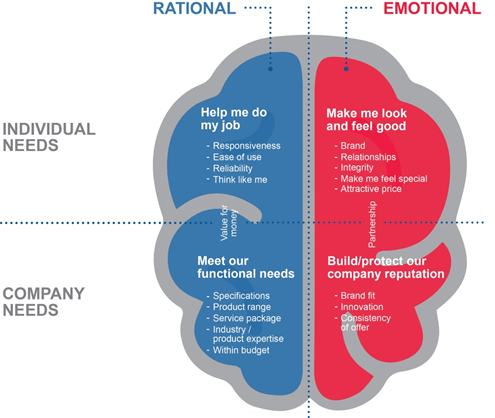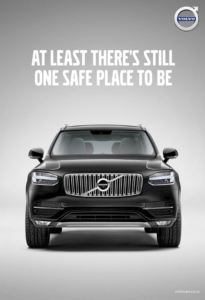Customer-Perceived Value
Customer-perceived value (CPV) is the difference between the prospective customer’s evaluation of all the benefits and costs of an offering and the perceived alternatives
(see Figure 4.1).
Total customer benefit is the perceived monetary value of the bundle of economic, functional, and psychological benefits customers expect from a given market offering because of the product, service, people, and image.
Total customer cost is the perceived bundle of costs customers expect to incur in evaluating, obtaining, using, and disposing of the given market offering, including monetary, time, energy, and psychological costs.

Suppose the buyer for a construction company wants to buy a tractor for residential construction from either Caterpillar or Komatsu. After evaluating the two tractors on the basis of reliability, durability, performance, and resale value, the buyer decides Caterpillar has greater product benefits.
He also decides Caterpillar provides better service and has more knowledgeable and responsive staff. Finally, he places higher value on Caterpillar’s corporate image and reputation. He adds up all the benefits from product, services, people, and image, and perceives Caterpillar as delivering greater customer benefits.
The buyer also examines his total cost of transacting with Caterpillar versus Komatsu, includ-ing time, energy, and psychological costs expended in product acquisition, usage, maintenance, ownership, and disposal. Then he considers whether Caterpillar’s total customer cost is too high compared to total customer benefits. If it is, he might choose Komatsu. The buyer will choose whichever source delivers the highest perceived value.
In this situation, Caterpillar can improve its offer in three ways.
- First, it can increase total customer benefit by improving economic, functional, and psychological benefits of its product, services, people, and/or image.
- Second, it can reduce the buyer’s time, energy, and psychological investment.
- Third, it can reduce its product’s monetary cost to the buyer.

Are decisions always made rationally?
Some marketers might argue that this process is too rational. Suppose the customer chooses the Komatsu tractor. How can we explain this choice?
Here are three possibilities:
- The buyer might be under orders to buy at the lowest price. Caterpillar’s task is then to convince the buyer’s manager that buying on price alone will result in lower long-term profits and customer value for the buyer’s company.
- The buyer will retire before the company realizes the Komatsu tractor is more expensive to operate. Caterpillar’s task is to convince other people in the customer company that Caterpillar delivers greater customer value.
- The buyer enjoys a long-term friendship with the Komatsu salesperson. Here, Caterpillar must show the buyer that the Komatsu tractor will draw complaints from the tractor operators when they discover its high fuel cost and need for frequent repairs.
example: Rational and Emotional decision making.

Customer-perceived value is a useful framework that applies to many situations and yields rich insights. It suggests that the seller must assess the total customer benefit and total customer cost associated with each competitor’s offer in order to know how its own offer rates in the buyer’s mind. It also implies that the seller at a disadvantage has two alternatives: increase total customer benefit or decrease total customer cost.
Consumers have varying degrees of loyalty to specific brands, stores, and companies. Loyalty has been defined as
“a deeply held commitment to rebuy or repatronize a preferred product or service in the future despite situational influences and marketing efforts having the potential to cause switching behavior.”
The value proposition consists of the whole cluster of benefits the company promises to deliver; it is more than the core positioning of the offering.

For example, Volvo’s core positioning has been “safety,” but the buyer is promised more than just a safe car; other benefits include good performance, design, and safety for the environment.
The value proposition is thus a promise about the experience customers can expect from the company’s market offering and their relationship with the supplier.
Whether the promise is kept depends on the company’s ability to manage its value delivery system. The value delivery system includes all the experiences the customer will have on the way to obtaining and using the offering.
